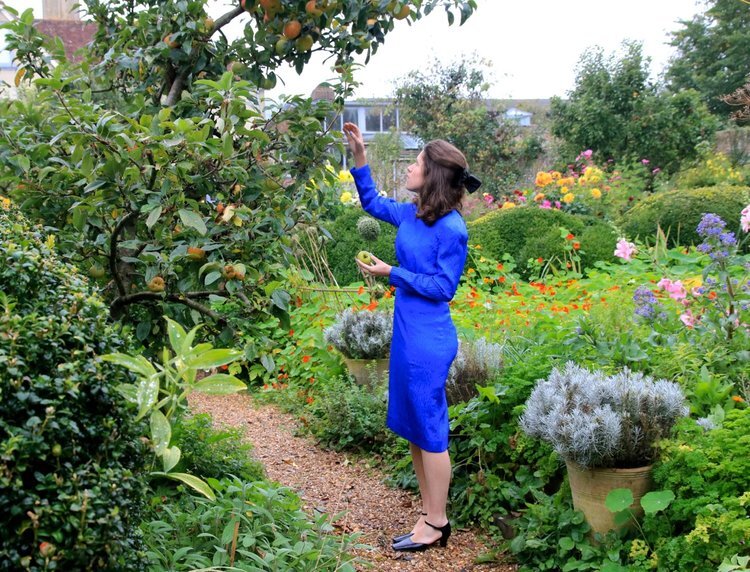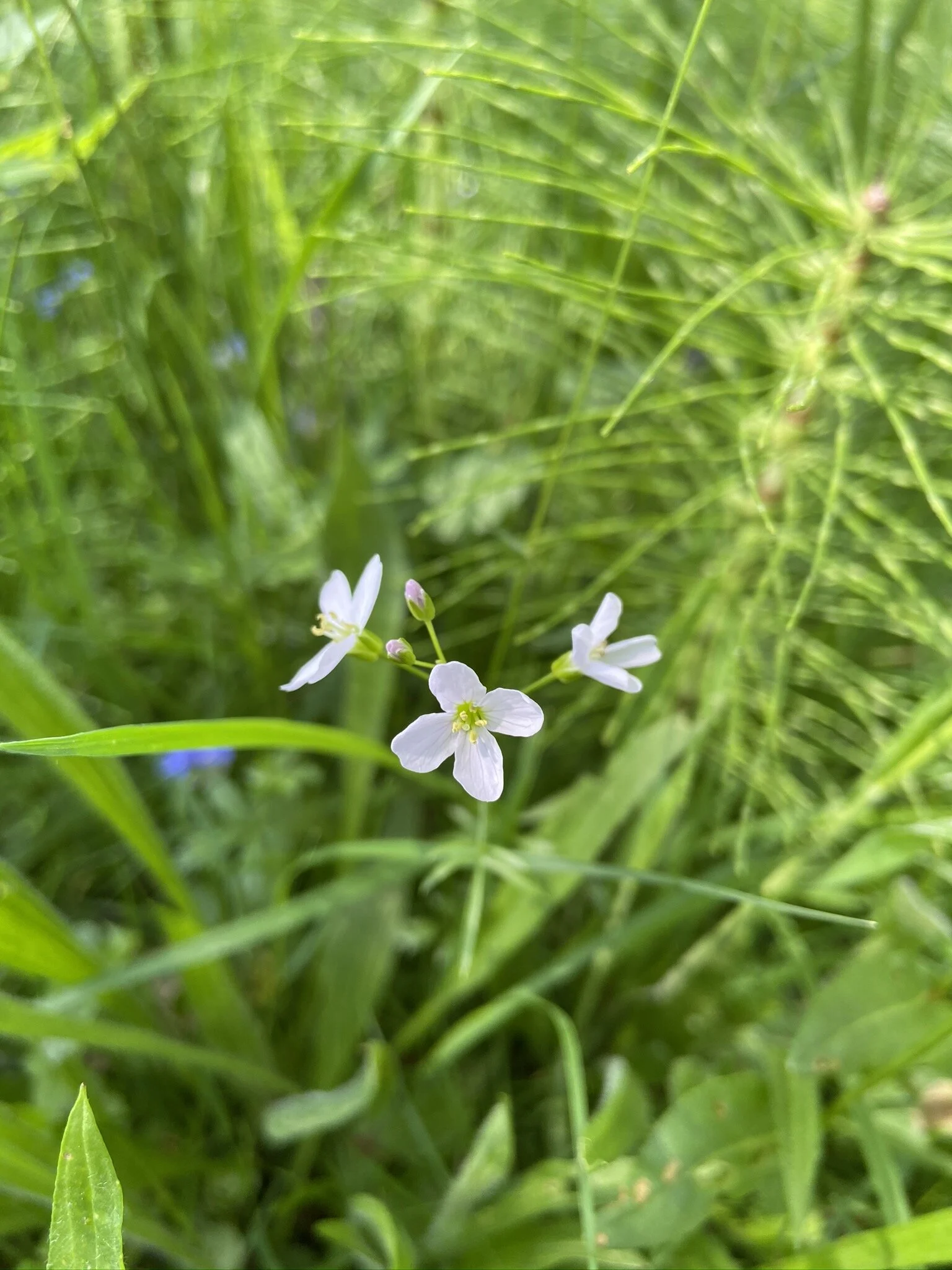
Cardamine pratensis
Brassicaceae
1st June 2020

I came across this very pretty little flower growing in the tall grasses, amongst the Horsetail Equisetum arvense, and close to a shady stream in the garden. Cardamine comes from the Ancient Greek word for cress κάρδαμον (kardamon), with kardia being ‘the heart’ and damao ‘to subdue’ as the plant was once used as a heart sedative in medicine. Pratensis is ‘of meadows’, the place where this little flower is often found to grow.
Collins, ‘Variable perennial of damp, grassy places. FLOWERS 12-20mm across with 4 pale lilac or white flowers LEAVES Seen mainly in a basal rosette of pinnately divided leaves with rounded lobes; narrow stem leaves also present’
And Domino which I really rather like, ‘A graceful early flowerer of spring meadows, in bloom when the cuckoo arrives.’ Very graceful, and very subtle, I didn’t find huge amounts of it, just a few flowers with their dainty white petals and delightful pale purple buds.
It is also known as Lady’s Smock, Milkmaids, Fairy Flower and Lucy Locket, and it’s leaves have a peppery taste, so you really can use it as a substitute for cress, if you sandwich needs spicing up a little! In the olden days it was sold as ‘meadow bittercress’ on market stalls to be eaten in salads, and to help cure scurvy.
Even more fun, according to Rosamond Richardson in Britain’s Wild Flowers this flower really does have magical powers, ‘a flower of the fairies with formidable magical powers. It is not to be picked or brought into the house for fear of provoking a storm, or causing you to be struck by lightning… Lady’s smock was used by witches in their spells’. And in France it is known as fleur de tonnerre, the flower of thunder!
Very pleasing and a little mysterious, I am going to hunt for more of it!
Alice x